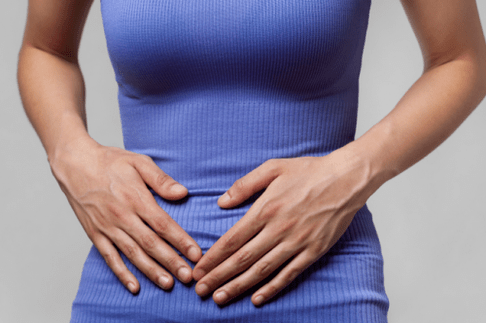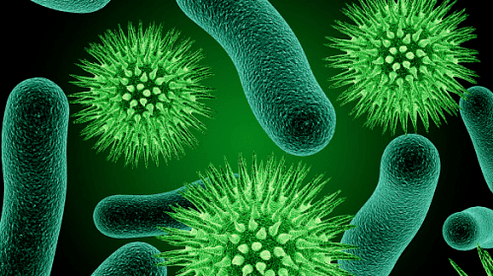One of the parasitic worms in the human body is helminths or in other words helminths. These parasites are capable of living and multiplying extremely rapidly in many internal organs: liver and kidneys, brain and muscle tissue, eyes and intestines.

Unfortunately, many of us simply underestimate the danger and seriousness of these parasites, while diseases caused by worms are found in different parts of the planet. That is why such a topic as worms: symptoms in adult patients is extremely important for everyone.
Worms: causes and types
Many of us think that in order not to get infected with worms, it is enough just to wash our hands more often and follow the general rules of hygiene. But it is not so. Nearly 70% of the world's population is a carrier of helminths.
It is quite difficult to detect the presence of worms in the adult body if you are not a physician specializing in this field of medicine. This is due to the fact that the disease practically has no obvious symptoms and signs.
There are some of the most common signs that a parasite has appeared in the body:
- A person quickly gets tired, he often shows aggression and anger for no apparent reason. Patients are often severely debilitated. Such people do not sleep well or suffer from insomnia.
- In the abdomen, the patient often presents with pain, discomfort and rumbling noises, bloating, and flatulence. Sick people lose their appetite and lose weight quickly. Or maybe the opposite - the patient has an excessive appetite and cannot eat enough. Constipation or diarrhea is common.
- Because helminths feed on the blood of their "owner", people often show symptoms such as anemia or anemia.
- Carriers of helminths often develop rashes on the surface of the skin or mucous membranes, and they also develop various allergic reactions.
If a person exhibits at least one of these signs, this should alert him and an urgent complaint to a medical facility.
The main way of penetration of helminths into the body is the digestive tract, along with food and drink. Parasitologists identify the following main ways of infection with parasites:
- Worm disease. Parasites enter the body of an infected person through the mouth or soil. This can be from direct contact with animals or from ingesting fly eggs that land on food or fruits and vegetables.
- Contact. The route of infection with this parasite is likely through contact with an already infected person.
- Biological filariasis. In this case, the parasites enter the body by eating undercooked meat, poultry or fish.
- Central unit. Mosquitoes are one of the most common carriers of helminths. At the same time as biting a sick person and a healthy person, the mosquito transmits the worms to the second person.
From the foregoing, we see that there are many possible ways to cause a worm infection. But one of the most common and dangerous methods is fecal-oral (with food and water).
The human body is a rather complex mechanism, there are a number of specific barriers that prevent the entry and development of helminths into the body.
One of the first barriers is saliva, which contains many different enzymes. Those are enzymes that have a unique ability to adversely affect the vast majority of worms.
If the worms survive, they will enter the stomach. But even here, a rather unpleasant surprise awaits them - hydrochloric acid and various enzymes have all the necessary properties to destroy a large number of species of parasites. In addition, the natural human intestinal immunity should not be underestimated.

Intestinal microflora, enzymes, blood cells - these are tireless warriors against worms. They are natural barriers designed to protect our bodies from parasites. But, as soon as this armor weakens, our body begins to be actively attacked by various worms.
To know exactly how to deal with parasites, you need to know their varieties and characteristics. Deep classification, there are three main large groups:
- Roundworm. Representatives of this group are also called roundworms and there are more than 24 thousand species of parasites. The outstanding feature of Roundworms is their round, cross-sectional shape. They have long and elongated bodies, with both ends pointed. Among the most common varieties of this parasite are roundworms, whipworms, pinworms, and roundworms.
- Tapeworm. Among the most striking features of the life cycle of these parasites is that they have an intermediate "host" either an animal or a fish. Eating undercooked or raw animal or fish meat has an almost 100% chance of contracting a tapeworm. The most common representatives of this species are broad tapeworms, beef tapeworms, dwarf tapeworms, etc. v.
- Bloodsuckers. The representatives of this group have a flattened leaf-shaped body, up to 1. 5 - 2 m long, at one end of the talus there are two suction cups, thanks to which the parasite attaches to the substrate. As a rule, flukes affect the intestines, muscle tissue or the nervous system of humans.
Diagnosis of worms in humans
It is difficult to determine the presence of worms in the body of an adult. This is because the symptoms of helminthiasis (headache, poor appetite, fever, gastrointestinal dysfunction, etc. ) are quite similar to those of other diseases.
In addition, quite often symptoms of the presence of helminths in the patient's body are trivial allergies. It is often the case that the parasitologist has a high probability of suspecting a patient with worms, laboratory tests do not confirm this, and the patient has been unsuccessfully treated for helminths for a long time. .
Worms: symptoms in adults, treatment - a question that has troubled our society for more than a hundred years. One of the most common and commonly used methods to identify helminthiasis in adults is the analysis of feces for helminth eggs.
Unfortunately, the effective percentage of this method is only 20%. And the remaining 80% of patients, cannot be diagnosed with helminths in the body or not. The low efficiency of such an analysis is due to the fact that the specialists do not take into account the period of egg laying of the worms. For example, consider roundworms. They lay eggs mainly in the morning (at 4-5 o'clock). This means that stools taken for analysis in the evening will not show the presence of worm eggs in them.
Usually parasitologists use such a method as enterobiasis. The essence of this technique is that a curettage is taken from the patient in the anal canal. This method, unfortunately, is also not very efficient.
The patient's blood tests also did not give a high rate of determining the presence of helminths. In both cases, the reason was the same - the time of analysis and the time of cyst elimination did not coincide.
Some experts use a specially designed test, by answering questions in which it is possible to identify about 50% of the development of helminthiasis in a patient. Here are the questions for this test:
- Do you feel itchiness in your anus?
- Is there a rash on the skin?
- Do you feel nauseous in the morning?
- You are having a sleep disorder.
- Do you have a bitter taste in your mouth?
- Are your lymph nodes swollen?
- Do you feel pain in the muscle area?
If the patient responds positively to 7 questions, this may indicate the presence of helminths in the adult's body.
Modern medicine suggests using a method such as ultraviolet skin scanner testing. Unfortunately, this method of diagnosing helminthiasis is not commonly used. This is due to the fact that the equipment to conduct it (ultraviolet skin scanner) is quite expensive and not every medical facility can afford it.
It is possible to determine the presence in a person's stool not only of cysts, but also of parts of their body, by using a method such as histological replication. The essence of this method is to examine several layers of feces under an electron microscope. This method allows parasitologists to obtain the most accurate results.
To determine the presence of worms in the patient's lungs, first of all, doctors appoint X-rays, as well as a test of the patient's sputum.
By using computed tomography or ultrasound, parasitologists can easily determine the presence of parasites in organs such as a patient's liver or brain.
A complete blood count or immunological tests will help determine the presence of parasites in the patient's blood. To determine if a patient has a helminth infection, specialists use several methods.
Unfortunately, none of them can give the most reliable results. In this regard, there are cases where the treatment process does not give satisfactory results but only aggravates the clinical and general condition of the patient.
The most effective drugs to treat different types of worms
Worms in adults, symptoms and treatment - these two concepts are closely related and have a direct relationship.
The process of treating helminthiasis is quite a difficult job. For example, some diseases caused by helminths are similar to cancer such as alveolar infections. Other diseases caused by tapeworms or echinococci can only be treated with surgery.
The third type of disease cannot be treated with pills. The correct method of treatment depends on how the parasites that have settled in the adult body are formed.
The complication of treatment lies in the fact that the dewormer kills only the adults, while the larvae and eggs remain in the human body and continue to parasitize there.
All drugs used to destroy worms can be conditionally divided into the following groups:
- Means include Mebendazole. This group of drugs is most used in the treatment of diseases such as ascariasis, teratomas, echinococcosis, pneumococcal disease, capillary disease, mixed helminthiasis, etc. v.
- Preparations containing Diethylcarbamazine. Basically, these funds have shown excellent results in the treatment of diseases affecting the human lymphatic system, the fibers that lie under the skin and the eye tissues.
- That is, the active substance in it is Levamisole. Such means are often used for the treatment of non-koto infections, intestinal helminthiasis, trichocephalosis, etc. v.
- Preparations include Albendazole. It is mainly used to treat cysticercosis and ascariasis.
In any case, you should not forget that self-medication is not recommended when a helminthic infection is detected. This can lead to complications and worsen the clinical picture of the disease.
The main reason for this is that most anthelmintics are toxic in nature and require a specially designed treatment regimen.
To achieve a positive treatment outcome, it is necessary to contact a medical professional with expertise in parasitology. Moreover, a prerequisite for treatment is strict observance of the doctor's recommendations.
Parasites on the human body such as worms are extremely dangerous to human health. For the most effective treatment, parasitologists are doing their best to determine as precisely as possible which species of parasites that have settled in the patient's body belong to.
To destroy worms, physicians use a rather large list of drugs. But self-medication is not recommended. For the treatment of helminthiasis, separate treatment regimens, dosages and duration of courses are being developed. It is recommended to strictly follow the instructions of the parasitologists.





























